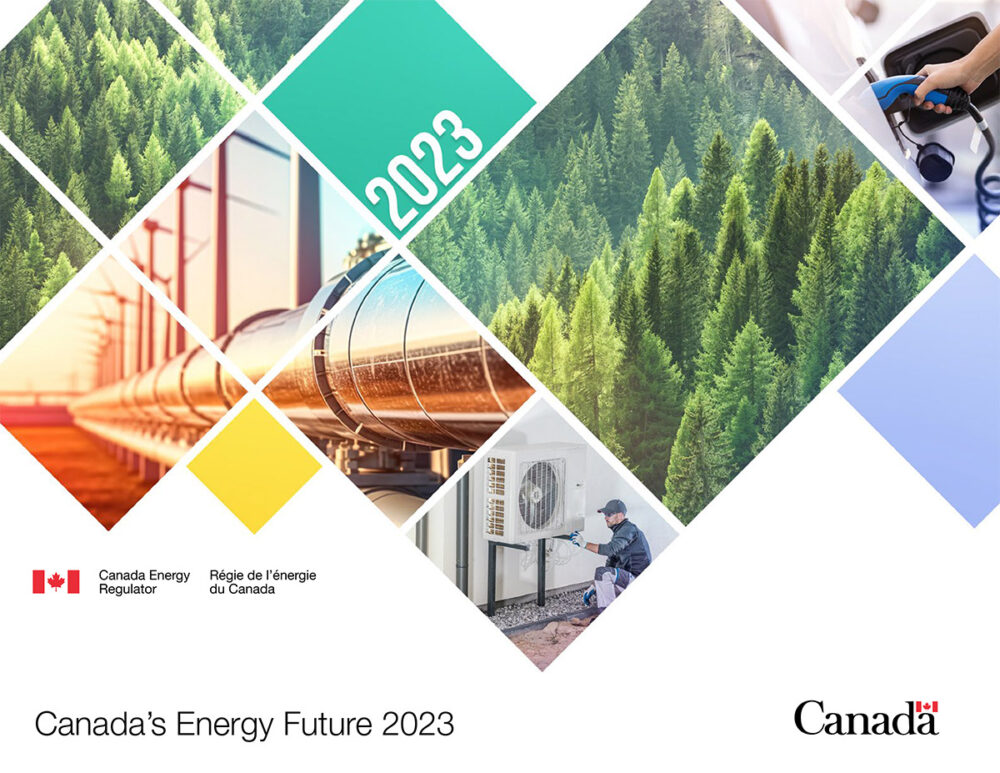
Canada Energy Regulator projects a major transformation to Canada’s energy system
June 21, 2023
By Canada Energy Regulator

Canada’s energy landscape would look dramatically different than it does today in a net-zero world, with significant changes in how Canadians produce and use energy. A new energy outlook from the Canada Energy Regulator (CER) projects that electricity could take a lead role in reshaping the energy mix, along with key contributions from hydrogen, bioenergy, and carbon capture, utilization and storage (CCUS).
Canada’s Energy Future 2023: Energy Supply and Demand Projections to 2050 (EF2023) presents three scenarios: Global Net-Zero, Canada Net-Zero, and Current Measures. Each scenario differs based on the pace of climate action in Canada and globally, with two specifically designed to achieve net-zero greenhouse gas (GHG) emissions in Canada by 2050.
In both net-zero scenarios, electricity would become the most important energy source for Canadians, while the use of fossil fuels falls significantly by 2050. This will involve replacing current technologies with electricity-powered alternatives, such as electric vehicles and heat pumps. Greater reliance on electricity also improves energy efficiency across the country, leading to a decrease in energy usage of up to 22 per cent by 2050. New technologies and fuels such as hydrogen, bioenergy and CCUS also play essential roles, especially in decreasing more difficult-to-reduce emissions.
“While the way we use energy in our daily lives wouldn’t change much in a net-zero world, the fuels and technologies that power our energy system will undergo a significant shift, with widespread electrification and less reliance on fossil fuels. The extent of the transformation would be substantial from the energy system we have today,” said Jean-Denis Charlebois, chief economist for
Canada Energy Regulator.
To accommodate the dramatic increase in electricity use, Canada will generate more electricity from clean sources such as wind, nuclear and hydro. At the same time, fossil fuel electricity generation without CCUS declines rapidly in response to increasingly strong climate policies. Among all technologies, wind is expected to contribute the greatest amount of new electricity generation by 2050, increasing over ninefold from current levels in both net-zero scenarios. Overall, the electricity sector is projected to achieve net-zero emissions by 2035 and become net-negative thereafter due to using bioenergy with CCUS.
The oil and gas industry significantly reduces emissions using various technologies through the projection period. At the same time, the pace of global climate action will have a direct impact on lowering global demand and prices for oil and gas in the long run. This is projected to lead to a decline in oil and gas production in Canada by 2050. This decline is most significant in the Global Net-Zero Scenario, where the rest of the world is taking actions to limit global temperature increases to 1.5 C. However, fossil fuels will still play an important part in Canada’s energy system, particularly in industrial facilities outfitted with CCUS or for non-energy use like asphalt and petrochemicals.
Achieving net-zero emissions will require significant contributions from all sectors of the economy, with the most significant reductions coming from the transportation, electricity, and oil and gas sectors. The report indicates that several sectors, like buildings, heavy industry and oil and gas, will have positive GHG emissions by 2050 in both net-zero scenarios. However, net-negative emissions from other sectors, including the electricity sector, will offset these positive emissions.
The CER produces timely, fact-based, and relevant energy analysis to inform the energy conversation in Canada. This long-term Canadian energy supply and demand outlook covers all energy commodities and Canadian provinces and territories and makes projections to 2050 using economic and energy models. The results in EF2023 are not predictions about the future nor are they policy recommendations. Rather, they are the product of scenarios based on a specific premise and set of assumptions.
Print this page